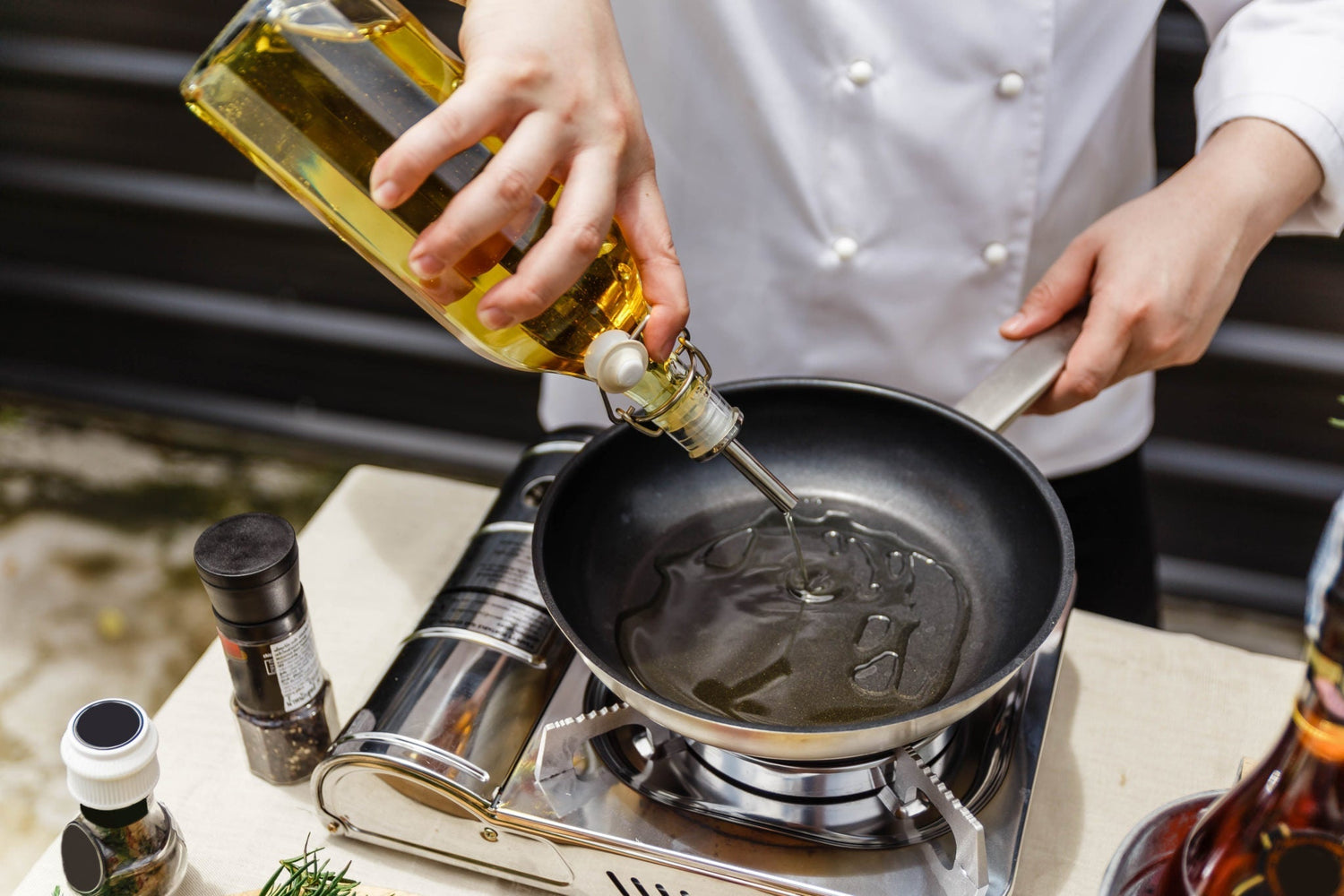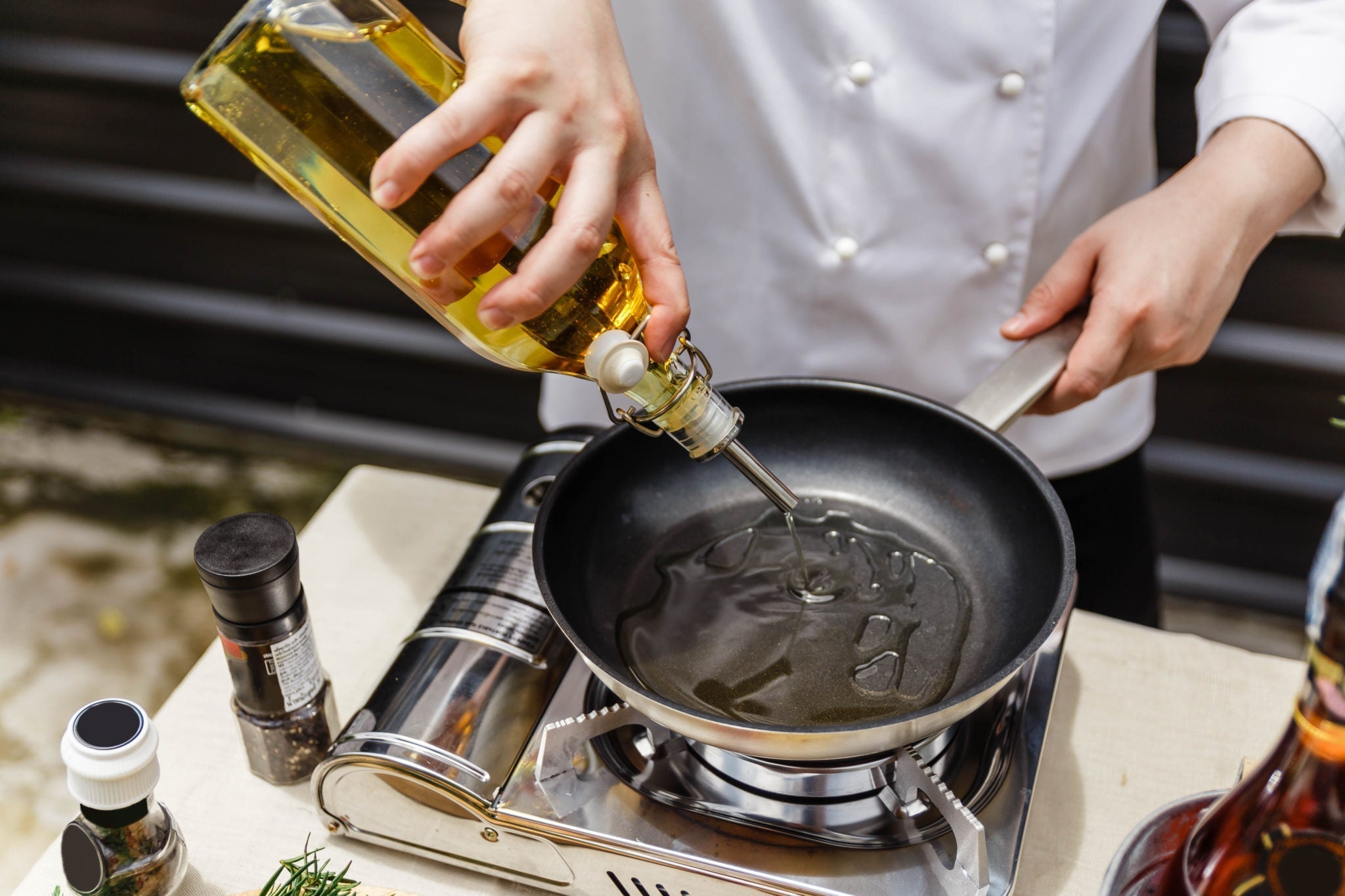Olive oil is a staple in many kitchens, celebrated for its flavor profiles and health benefits. But have you ever wondered, how is olive oil made? In this article, we'll take a deep dive into the fascinating world of olive oil production, covering everything from olive harvesting to the final bottling process. Understanding the intricacies of how olive oil is made can enhance your appreciation for this versatile oil and perhaps even inspire you to incorporate it more thoughtfully into your cooking.

The Olive Harvesting Process
Harvesting olives is the first crucial step in the production of olive oil. Depending on the region and the desired flavor profile, olives can be harvested by hand or using mechanical methods.
Hand Picking vs. Mechanical Harvesting
Hand picking is the traditional method, ensuring that the olives remain in pristine condition. This method is often used for producing high-quality extra virgin olive oils. For larger-scale production, mechanical harvesting is employed. This method allows for the collection of olives more quickly but may also lead to a higher percentage of damaged fruits.
Both methods have their pros and cons, and the choice often depends on the producer's goals and available resources. For more on quality, check out Oil Quality.

Sorting and Cleaning the Olives
Once the olives are harvested, they must be sorted to remove any debris, leaves, or damaged fruits. This stage ensures that only the best olives go into the next phase of production. After sorting, the olives are thoroughly washed to remove any dirt or contaminants.

Crushing and Grinding the Olives
The cleaned olives are then crushed, either using traditional stone mills or modern industrial crushers. This process, also known as malaxation, involves grinding the olives into a paste.
Traditional vs. Modern Techniques
Traditional stone mills are still used in some artisanal productions, as they are believed to produce a superior flavor. However, modern crushers are more efficient and are commonly used in large-scale production. The choice of technique can affect the flavor, aroma, and quality of the finished oil. Learn more about Modern Techniques.

Extraction of Olive Oil
After crushing, the olive paste undergoes a process to separate the oil from the solid and liquid components.
Pressing vs. Centrifugation
The traditional method involves pressing the paste using hydraulic presses. This method is effective but can be labor-intensive. Centrifugation, on the other hand, is a modern method that uses centrifugal force to separate the oil. This technique is faster and more efficient, making it the preferred choice for large producers.
Filtering and Bottling
Once the oil is extracted, it may undergo filtering to remove any remaining impurities. Some producers opt for unfiltered oil, which can have a cloudier appearance and a more intense flavor.
The Final Touches
After filtering, the oil is ready to be bottled. It is crucial to store olive oil in dark glass bottles or tins to protect it from light and heat, which can degrade the quality over time. For tips on maintaining your kitchen, visit this guide.
Factors Affecting Olive Oil Quality
The journey from olive to oil involves several factors that can influence the final product's quality.
Climate and Soil
The terroir, including the climate and soil conditions, has a significant impact on the flavor profile of the olive oil. Different regions produce oils with distinct characteristics, from the grassy notes of Tuscan oils to the fruity flavors of Spanish varieties.
Harvest Timing
The timing of the harvest also plays a critical role. Olives harvested early in the season tend to produce oils with higher polyphenol content, which are more robust and have a longer shelf life. Later harvests yield oils that are milder and fruitier.
Processing Methods
As mentioned, the methods of harvesting, crushing, and extraction can all influence the quality and flavor of the olive oil. To understand why timing matters, visit Harvest Timing.
Uses of Olive Oil in Professional Kitchens
Understanding how is olive oil made can help kitchen professionals make more informed choices when selecting and using this ingredient.
Cooking Techniques
Olive oil is versatile and can be used in a variety of cooking techniques, including sauting, roasting, and grilling. Its smoke point is relatively high, making it suitable for many culinary applications.
Dressing and Finishing
Extra virgin olive oil, in particular, is often used as a finishing oil, drizzled over dishes to enhance flavor and add a touch of sophistication.
Pairing with Ingredients
Olive oil pairs well with a wide range of ingredients, from fresh vegetables and salads to pasta and bread. Understanding the flavor profile of the oil can help in selecting the right type for each dish. Learn more about Olive Pairing.
Health Benefits of Olive Oil
Beyond its culinary uses, olive oil is renowned for its health benefits.
Rich in Healthy Fats
Olive oil is a good source of monounsaturated fats, which have been shown to promote heart health.
Antioxidant Properties
The high polyphenol content in extra virgin olive oil contributes to its antioxidant properties, which can help reduce inflammation and protect against chronic diseases.
FAQs
1. Is cold-pressed olive oil better?
Cold-pressed olive oil is often considered superior because it retains more of the oil's natural flavor and nutritional properties. The term 'cold-pressed' means that no heat was used during extraction, which helps to preserve the oil's quality.
2. Can olive oil go bad?
Yes, olive oil can go bad. It is best stored in a cool, dark place and kept in a tightly sealed container to prevent oxidation and rancidity. Most olive oils have a shelf life of 18 to 24 months from the time of bottling.
3. What is the difference between virgin and extra virgin olive oil?
Extra virgin olive oil is of the highest quality, made from pure, cold-pressed olives. It has a superior flavor and lower acidity compared to virgin olive oil, which is also made from cold-pressed olives but may have slightly higher acidity and a less refined flavor.
For more detailed information on the health benefits of olive oil, you can refer to this informative article.
As an Amazon Associate, I earn from qualifying purchases.






Leave a comment
This site is protected by hCaptcha and the hCaptcha Privacy Policy and Terms of Service apply.